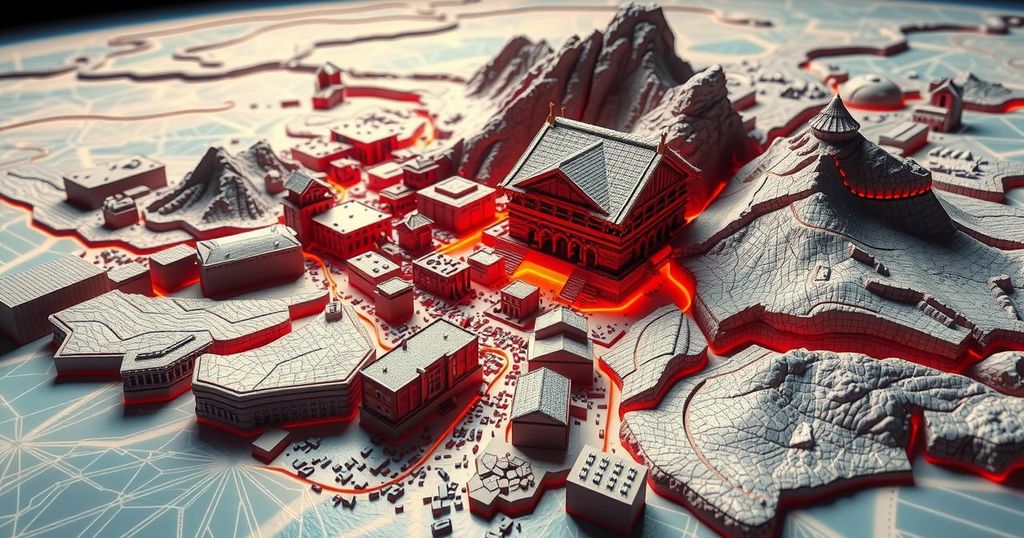World news
ARTIFICIAL INTELLIGENCE, ASIA, CHILE, CHINA, CHRISTOPHER JOHNSON, CLIMATE, DI, ENVIRONMENTAL IMPACT, HAWAII, JACKSON SCHOOL OF GEOSCIENCES, KI, LOS ALAMOS, LOS ALAMOS NATIONAL LABORATORY, MEXICO, NATURAL DISASTERS, NORTH AMERICA, SCIENCE, SERGEY FOMEL, SOUTH AMERICA, TECHNOLOGY, UNIVERSITY OF TEXAS AT AUSTIN
Ethan Kim
0 Comments
AI Innovations in Earthquake Prediction: A Glimpse into the Future
Recent advancements in AI technology are reshaping the field of earthquake prediction, offering new hope in forecasting seismic events. Researchers at the University of Texas developed DiTing, an AI system that can predict 70% of earthquakes a week in advance, while work at Los Alamos National Laboratory demonstrates machine learning techniques capable of detecting precursors for earthquakes. These developments could lead to improved disaster preparedness and increased safety for communities at risk.
For decades, the dream of accurately predicting earthquakes has remained elusive, confounding even the most optimistic scientists. The unpredictable nature and sudden occurrence of earthquakes have rendered traditional forecasting methods inadequate, leaving societies vulnerable to their catastrophic consequences. However, recent advancements in artificial intelligence (AI) are beginning to alter this narrative, infusing new hope into earthquake prediction efforts and safety measures.
In 2023, researchers at the Jackson School of Geosciences, University of Texas at Austin, achieved significant milestones by creating an AI system capable of predicting 70% of earthquakes up to a week before they occur. Named DiTing, this clever algorithm was meticulously trained on five years of seismic data gathered in China, providing crucial insights into seismic activity and enabling the identification of potential epicenters along with assessment of quake likelihood. Throughout a seven-month trial, DiTing remarkably predicted 14 earthquakes within a 200-mile radius of their epicenters, showcasing a level of accuracy previously deemed unattainable.
“Predicting earthquakes is the holy grail,” stated Sergey Fomel, a geoscientist and participant in the research. He emphasized the progress made, noting, “We’re not yet close to making predictions for anywhere in the world, but what we achieved tells us that what we thought was an impossible problem is solvable in principle.”
Meanwhile, at Los Alamos National Laboratory, groundbreaking endeavors in signal detection utilized machine learning techniques to uncover subtle precursors of earthquakes that had been previously hidden amidst seismic noise. Their work at the Kīlauea volcano in Hawaii marked a notable achievement, as it represented the first successful identification of these warning signals associated with stick-slip faults, infamous for causing some of the most devastating earthquakes in history.
Christopher Johnson, representing the Los Alamos team, remarked on the implications of their discovery: “We wanted to see if we could pull out signals from the noise and identify where the system was nearing a major slip in the loading cycle. It is the first time we’ve applied this method to an earthquake of this type and magnitude.” This application of machine learning has unveiled a new discipline in earthquake monitoring, contributing vital insights into fault dynamics and potentially leading to more effective early warning mechanisms.
The advancements in AI’s role in earthquake forecasting extend well beyond initial predictions. Modern AI systems can now facilitate real-time insights into seismic activities, equipping communities with critical information that could empower effective disaster preparation and timely evacuations. Ongoing efforts like those exemplified by DiTing highlight the transformative potential of AI in global seismic monitoring. The China Earthquake Observation Network’s collaboration with researchers has illustrated how the integration of extensive datasets with advanced technology can revolutionize earthquake detection processes.
It is essential to recognize that these advancements symbolize not just technological triumphs but kinetic steps toward safeguarding lives and minimizing earthquake-induced devastation. Although challenges persist, the optimistic outcomes achieved by AI researchers underscore the possibility of transforming unpredictable disasters into predictable events through informed preparedness.
Institutions such as the University of Texas at Austin and Los Alamos National Laboratory continue to pave the way for the continued evolution of AI, indicating that the vision of reliable earthquake prediction is steadily materializing into reality. By harnessing cutting-edge AI capabilities, humanity stands at the threshold of redefining its interaction with natural disasters, shifting from reactive recovery strategies to proactive resilience frameworks. The dawn of AI-driven earthquake prediction is upon us, heralding a future replete with promise for enhanced safety and preparedness against earthquakes.
The history of earthquake prediction is marked by numerous challenges that have rendered effective forecasting nearly impossible until now. Traditional methods have relied on historical data and geological surveys, which often lack the immediacy and precision required to effectively mitigate the impact of earthquakes. The emergence of machine learning and artificial intelligence has opened new avenues in this field, enabling researchers to analyze vast amounts of seismic data and detect patterns that could signal impending events. By leveraging AI technology, scientists aim to transform the process of earthquake forecasting, ultimately striving for a safer future.
The efforts of researchers at the University of Texas at Austin and Los Alamos National Laboratory exemplify the extraordinary potential of AI in revolutionizing earthquake prediction. Achievements such as DiTing pave the way for increased accuracy in predicting seismic events and offer vital insights into fault behaviors. As AI technology continues to evolve, it promises to greatly enhance disaster preparedness, minimize loss of life, and reshape humanity’s relationship with natural disasters. While challenges remain, the journey towards reliable earthquake forecasting is increasingly promising and vital.
Original Source: indiaai.gov.in




Post Comment